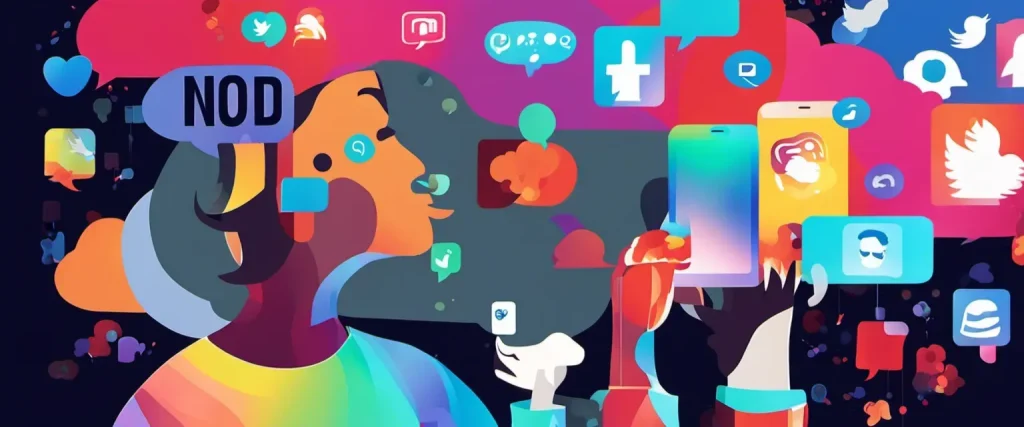In “No Filter,” Sarah Frier delves into the captivating story of Instagram, exploring its dramatic rise to prominence and the implications it has had on society. As a seasoned technology reporter for Bloomberg News, Frier possesses remarkable insight into the inner workings of the platform, dissecting its impact on our lives, relationships, and the world of social media. She skillfully uncovers the origin of the company, highlighting the clash of personalities and ideologies that shaped its trajectory. Through meticulous research and interviews with key figures at Instagram, Frier reveals the untold story behind the app’s phenomenal success, while shedding light on the controversies and challenges that have inevitably emerged along the way. No Filter is an essential read for anyone interested in the evolution of social media, as Frier expertly dissects the meteoric rise and unprecedented influence of Instagram.
Chapter 1: The Birth of Instagram
Chapter 1: The Birth of Instagram of the book No Filter by Sarah Frier provides an insightful overview of the early days and the journey leading up to the birth of the popular photo-sharing app known as Instagram. Frier takes readers back to 2009 when the app’s co-founders, Kevin Systrom and Mike Krieger, were experimenting with a location-based social network called Burbn.
The chapter begins with the story of Systrom, a programmer with a passion for photography, who partnered with Krieger, a Brazilian product designer, to create Burbn. They had the idea of combining elements from different social media platforms to create a seamless experience for users. However, they soon realized that Burbn was too complex and cluttered, which led them to make a critical decision to strip it down to its core functionality – photo sharing. This was the turning point that led to the birth of Instagram.
Frier delves into the app’s innovative features, emphasizing how simplicity and ease of use set it apart from existing platforms. She also highlights the pivotal role played by early adopters in creating traction for Instagram, allowing it to grow rapidly. The chapter explores how Systrom and Krieger’s backgrounds and experiences influenced the app’s design and functionality.
Additionally, Frier discusses how Instagram’s first users, including celebrities and influential figures, helped popularize the app, leading to a surge in downloads and user engagement. The chapter also delves into the challenges the founders faced in scaling the platform, ensuring its stability, and dealing with increasing user demands.
Overall, Chapter 1 lays the foundation for the captivating story of Instagram, highlighting its humble beginnings as a simple photo-sharing app that would eventually transform the way people around the world connect, share, and communicate through visual media.
Chapter 2: Growing Pains
Chapter 2: Growing Pains, of the book “No Filter” by Sarah Frier, explores the rapid growth and subsequent challenges faced by Instagram in its early years. This chapter sheds light on the struggles and decisions the company made as it transformed from an innovative start-up into a global phenomenon.
The chapter begins by delving into Instagram’s explosive growth in 2011. With a dedicated team led by founders Kevin Systrom and Mike Krieger, the photo-sharing app quickly gained popularity, attracting millions of users within a short span of time. However, this unprecedented growth brought with it a series of issues and dilemmas.
One of the main challenges Instagram faced was maintaining the app’s infrastructure. The surge in user numbers led to frequent crashes and technical glitches. Systrom and his team scrambled to keep up with the increasing demands and fix the problems quickly. Additionally, the rapid rise in popularity attracted the attention of competitors, including Twitter, which tried to launch its own photo-sharing service to challenge Instagram’s dominance.
Another hurdle Instagram faced was monetization. As the app grew, Systrom began to focus on finding a sustainable business model. He explored various options, from partnering with brands for sponsored content to incorporating advertisements within the app. However, Systrom’s decisions faced backlash from users who felt that their feed was becoming too commercialized.
Furthermore, the chapter explores Instagram’s struggles with maintaining a positive user experience, specifically focusing on the rise of online bullying. As the app gained popularity among teenagers, instances of cyberbullying became increasingly prevalent. Instagram’s team had to grapple with how to address these issues and create a safer environment for its users.
Overall, Chapter 2 of “No Filter” highlights the growth challenges faced by Instagram in its early years. It depicts the company’s efforts to navigate rapid expansion, technical issues, monetization strategies, and the need to address negative aspects of the platform. Through these trials, Instagram began to shape its identity as a powerful social media platform that would revolutionize the way people share and consume visual content.
Chapter 3: Lights, Camera, Action!
Chapter 3 of “No Filter” by Sarah Frier, titled “Lights, Camera, Action!,” explores the rise of Instagram as a visual platform and its transformation into a cultural phenomenon.
The chapter begins by highlighting Instagram’s initial challenge of distinguishing itself from an array of similar photo-sharing apps. Co-founders Kevin Systrom and Mike Krieger decided to focus on creating a more aesthetically pleasing experience, encouraging users to share only their most captivating moments. Instagram’s defining feature became its iconic filters, which allowed users to enhance the appearance of their photos and make them aesthetically appealing.
As Instagram gained traction, the chapter delves into the strategic decisions that led to its early success. The founders initially concentrated on attracting influential users, such as famous photographers, celebrities, and social media influencers. By doing so, they effectively created a vision of what Instagram could become – a platform for creative expression, self-promotion, and carefully curated identities.
Furthermore, the chapter highlights some of the challenges Instagram faced along the way. For instance, the app struggled to develop a sustainable revenue model, leading to advertisements and sponsored content gradually becoming a part of the user experience. Additionally, users began to express concerns about privacy and authenticity, as Instagram increasingly became a platform for portraying idealized lives and promoting personal brands.
The chapter also delves into the impact of Instagram on the fashion industry, exploring the rise of influencers (Instagram users with substantial followings) and their ability to transform trends and boost sales. Designers and brands realized the importance of aligning themselves with popular Instagram influencers to reach their target audiences effectively.
In summary, Chapter 3 of “No Filter” showcases Instagram’s journey from a simple photo-sharing app to a powerful cultural force. It highlights the app’s distinctive features, its early strategic decisions, challenges faced along the way, and the transformative impact it had on industries like fashion.
Chapter 4: Acquisition by Facebook

Chapter 4 of “No Filter” by Sarah Frier titled “Acquisition by Facebook” explores the pivotal moment in Instagram’s journey when it was acquired by Facebook. The chapter highlights the circumstances leading up to the acquisition, the motivations behind it, and the subsequent impact on Instagram and its founders.
In 2012, Instagram had become a massive success with its photo-sharing app gaining popularity around the world. While it continued to grow exponentially, it faced certain challenges, one of which was monetization. Despite having millions of users, Instagram had generated zero revenue. This led the founders, Kevin Systrom and Mike Krieger, to consider selling their company.
The chapter delves into the negotiations between Facebook and Instagram. Mark Zuckerberg, Facebook’s CEO, recognized the potential and threat that Instagram posed and saw the acquisition as a strategic move to neutralize competition while also expanding Facebook’s reach in mobile devices. The deal was carried out in secrecy with Zuckerberg taking control of negotiations to ensure its success.
The acquisition was officially announced on April 9, 2012, for a staggering $1 billion. The news shocked the tech industry, and people wondered why Facebook would pay such a hefty price for a company with no revenue. However, Zuckerberg believed in the future of visual communication, and Instagram aligned perfectly with Facebook’s vision.
For Systrom and Krieger, the decision to sell was a combination of feeling outgunned by Facebook’s resources and the belief that this partnership offered opportunities for Instagram’s growth that they couldn’t achieve alone. The chapter also explores the challenges faced by the founders in integrating their company into Facebook, striving to maintain the independent brand and culture of Instagram within the larger organization.
The chapter closes with the fallout from the acquisition, as various stakeholders questioned the deal’s price tag and Facebook’s motives. However, the acquisition ultimately proved to be a wise move, strengthening both Instagram and Facebook’s positions in the social media industry.
In summary, Chapter 4 of “No Filter” examines the acquisition of Instagram by Facebook, detailing the motivations of both companies, the negotiation process, and the impact on the founders and the industry as a whole.
Chapter 5: The Rise of Influencers
Chapter 5 of “No Filter” by Sarah Frier, titled “The Rise of Influencers,” explores the emergence and increasing influence of social media influencers in the digital age. Frier delves into the stories of various influencers and the impact they have on social media platforms and society as a whole.
The chapter opens with the story of Julieanna Goddard, known as YesJulz, who became one of the original influencers in the early 2010s. Frier discusses how Goddard leveraged Snapchat and other platforms to build a personal brand, showcasing her extravagant lifestyle and gaining a massive following. This success paved the way for other individuals to realize the potential of becoming influencers and monetizing their online presence.
Frier also examines the business side of influencer marketing, as companies started to recognize its potential. She highlights the story of Daniela Cecilio, the CEO of a social media marketing platform called Grabr. Cecilio realized the power of influencers in reaching consumers and connecting them with brands, leading her to create a marketplace for influencers to collaborate with companies.
The author also discusses the rise of beauty influencers and the immense impact they have had on the cosmetics industry. Notable figures like Michelle Phan, Huda Kattan, and Kylie Jenner are featured, and Frier explores how they used their platforms to launch successful beauty brands. She explains how influencers have disrupted the traditional pathways of product development, marketing, and distribution, allowing them to amass huge fortunes and gain significant influence.
Towards the end of the chapter, Frier examines the darker side of influencer culture. She discusses the pressure influencers face to project a perfect life and body image, often resulting in mental health struggles and harmful behaviors.
In conclusion, Chapter 5 of “No Filter” highlights the rise of influencers as a powerful force in the digital landscape. Frier explores their influence on social media, the rise of influencer marketing, their impact on industries such as beauty, and the challenges influencers face in maintaining their image.
Chapter 6: Controversies and Challenges
Chapter 6 of the book “No Filter” by Sarah Frier delves into the controversies and challenges faced by Instagram, the immensely popular social media platform. Frier explores the impact of controversial content, privacy concerns, and the evolution of Instagram’s algorithm.
The chapter starts by examining the turmoil caused by controversial content on the platform. Frier chronicles the struggles of Instagram in effectively moderating and blocking inappropriate or harmful content, such as explicit photos, hate speech, and cyberbullying. These issues not only tarnished Instagram’s reputation but also raised questions about its commitment to user safety.
Privacy concerns also come into play, with Frier highlighting Instagram’s relationship with Facebook and the subsequent data sharing among the platforms. She discusses the backlash faced when users discovered that their personal information was being used for targeted advertising and other purposes.
Another central theme of the chapter revolves around Instagram’s algorithm and its impact on users’ experiences. Frier explains how Instagram shifted from a chronological feed to an algorithm-driven one, which determined the order of posts based on users’ interests and engagement. This change was met with mixed reactions, as some users appreciated the curated content, while others felt frustrated by the lack of control over their feed.
Furthermore, Frier explores the unintended consequences of the algorithm, like the spread of fake news and the creation of echo chambers. Instagram’s algorithmic processes inadvertently amplified extremist voices and allowed misinformation to flourish, leading to concerns about its role in shaping public opinion.
In summary, Chapter 6 of “No Filter” delves into the controversies surrounding Instagram, including challenges in content moderation, privacy concerns, and the effects of its algorithmic feed. Through these discussions, Sarah Frier sheds light on the difficulties faced by the platform as it navigates the fine line between promoting user engagement and maintaining ethical standards.
Chapter 7: Instagram’s Impact on Society
Chapter 7 of “No Filter” by Sarah Frier explores the profound impact Instagram has had on society since its inception. Frier argues that Instagram, beyond being a simple photo-sharing app, has transformed culture, behavior, and even mental health for its users.
The chapter highlights the shift in our visual culture, as Instagram has become the premier platform for self-expression and visual storytelling. Frier shows how influencers and celebrities have used Instagram to curate their lives and project an ideal image, giving rise to the influencer economy where popularity equates to financial gains. She delves into the psychological effects on users, particularly teenagers, who often compare themselves to the seemingly perfect lives presented by influencers. This has led to increased anxiety, feelings of inadequacy, and low self-esteem, fueling the need for external validation.
Frier also addresses the impact of Instagram in politics and activism. The platform has given marginalized communities a voice, allowing them to share their stories and mobilize support. It has also facilitated political campaigns, enabling politicians to connect more intimately with the electorate through visual storytelling.
However, the chapter also reveals the darker aspects of Instagram’s impact on society. The obsession with likes and followers has spawned a culture of “fake” authenticity, where users often manipulate their images and lives to fit societal expectations. It has also perpetuated the spread of misinformation, algorithms that prioritize engagement over accuracy, and the constant pressures of being “on” all the time.
Overall, Chapter 7 explores the complex and far-reaching consequences of Instagram’s impact on society, highlighting both the positive aspects of self-expression and activism, as well as the negative effects on mental health and authenticity.

Chapter 8: Looking Ahead
Chapter 8: Looking Ahead of the book No Filter by Sarah Frier delves into the future of Instagram, shedding light on Mark Zuckerberg’s vision for the platform and the challenges it faces. Frier highlights how Instagram went from being a simple photo-sharing app to a tech giant with immense societal impact.
The chapter begins by exploring the internal struggle within Facebook about how to monetize Instagram. Facebook’s executives were aware of Instagram’s enormous potential, and some advocated for aggressive advertising methods while others were concerned about user experience and maintaining the platform’s authenticity.
Mark Zuckerberg, Instagram’s parent company’s CEO, recognized the importance of keeping users engaged and preserving the app’s appeal. As Frier explains, Zuckerberg urged the Instagram team to focus on long-term goals rather than short-term gains. He believed in creating a platform that could confront Snapchat’s challenge and stay relevant as new social media trends emerged.
One of these trends was the rise of TikTok, which posed a significant threat to Instagram. Instagram responded by introducing Reels, a feature that allows users to create short videos and compete with TikTok head-on. Frier outlines the challenges Instagram faced in adopting this new format and attracting users to Reels.
Furthermore, the chapter explores the dark side of Instagram’s success: the increasing number of influencers grappling with mental health issues, the phenomenon of “fake followers” and “like farms,” and the negative impact of social comparison on young users.
Despite these challenges, Zuckerberg planned to merge Facebook, Instagram, and WhatsApp into a conglomerate called “The Social Network.” Frier discusses the implications of this integration and the potential for even greater reach and control over user data.
In summary, Chapter 8: Looking Ahead of No Filter examines the strategic decisions that Instagram has made to stay at the forefront of the social media landscape. It dives into the challenges Instagram has faced, from striking the right balance between advertising and user experience to combatting competition from new platforms like TikTok. The chapter also explores the aftermath of Instagram’s success, shedding light on the mental health concerns and issues related to fake followers. Ultimately, it highlights the enduring vision of Mark Zuckerberg to create a cohesive social media empire that can withstand future challenges.
After Reading
In conclusion, “No Filter” by Sarah Frier offers a fascinating exploration of the rise and impact of Instagram. Throughout the book, Frier delves into the platform’s origin, the personalities behind its success, and the various controversies surrounding its growth. Frier’s extensive research and interviews provide a well-rounded perspective of how Instagram became a global powerhouse, influencing modern culture, society, and even politics. Additionally, the book sheds light on the challenges Instagram faces, such as privacy concerns and the constant battle to maintain user trust. Frier’s insightful and compelling narrative leaves readers with a better understanding of the power and complexities of social media, providing a valuable lens through which to view the digital age. Overall, “No Filter” is an engrossing read that both tech enthusiasts and casual users will find enlightening and thought-provoking.
1. Amusing Ourselves to Death: Public Discourse in the Age of Show Business” by Neil Postman – This thought-provoking book explores how our society’s obsession with entertainment and media consumption has impacted our ability to engage in meaningful conversations and critical thinking. Postman argues that the constant stream of information and entertainment has led to the erosion of our understanding of important issues.
2. The Shallows: What the Internet Is Doing to Our Brains” by Nicholas Carr – In this eye-opening book, Carr delves into the effects of constant internet usage on our cognitive abilities and attention spans. He takes a closer look at how the internet and digital media have shaped our brains, altering the way we process information, think, and retain knowledge.
3. Digital Minimalism: Choosing a Focused Life in a Noisy World” by Cal Newport – Newport presents a compelling argument for adopting a minimalist approach to our digital lives. Drawing on psychology, he explores the ways in which excessive digital consumption affects our well-being, creativity, and productivity. He offers practical strategies for reclaiming our attention and cultivating a more intentional and fulfilling relationship with technology.
4. “The Age of Surveillance Capitalism: The Fight for a Human Future at the New Frontier of Power” by Shoshana Zuboff – Zuboff provides a comprehensive examination of the tech industry’s data-driven business models and their implications for our privacy and autonomy. In this thought-provoking book, she argues that we are living in an age of surveillance capitalism, where our personal data is exploited for profit, and urges us to reclaim our right to privacy and digital sovereignty.
5. “The Filter Bubble: How the New Personalized Web Is Changing What We Read and How We Think” by Eli Pariser – Pariser explores the hidden consequences of personalized algorithms that shape our online experiences. He reveals how these algorithms limit our exposure to diverse perspectives and reinforce our existing beliefs, fostering societal polarization. Drawing on research and personal anecdotes, Pariser calls for a more transparent and ethical approach to digital content curation.



